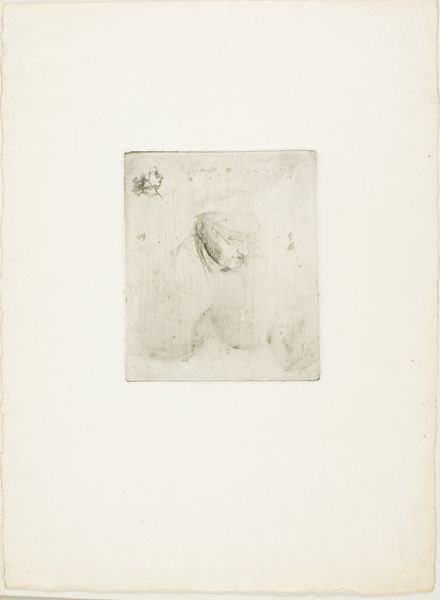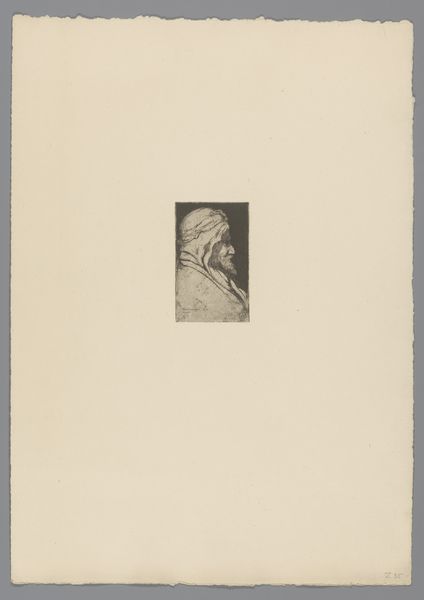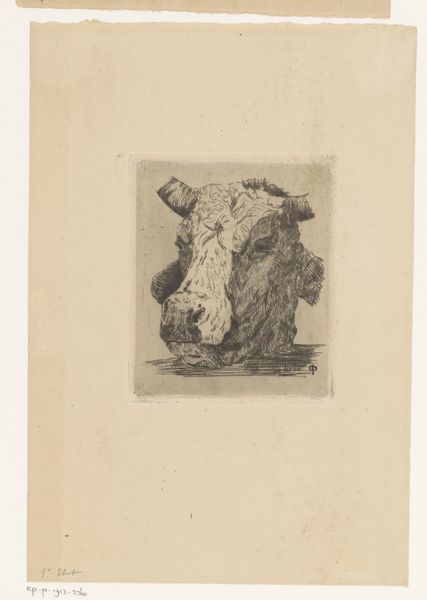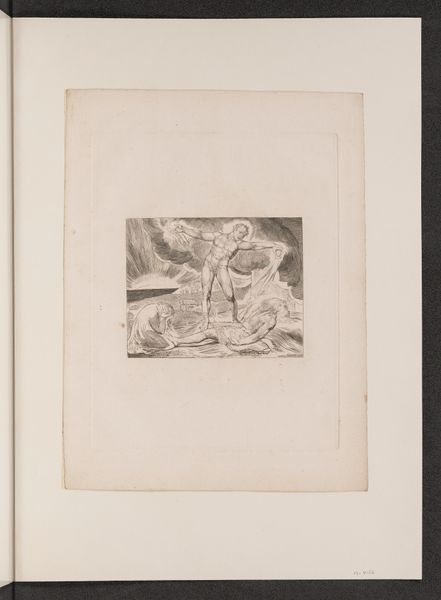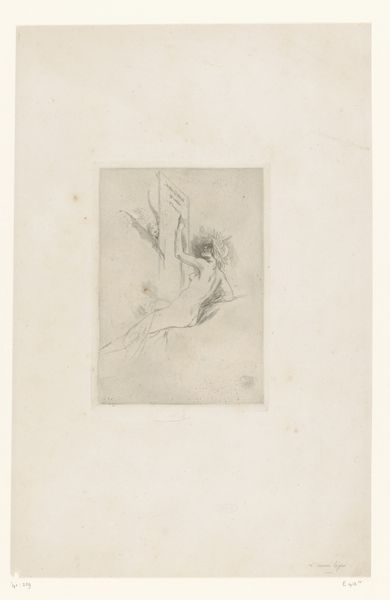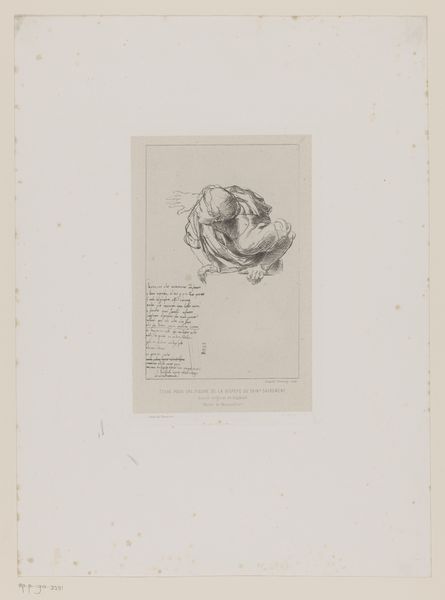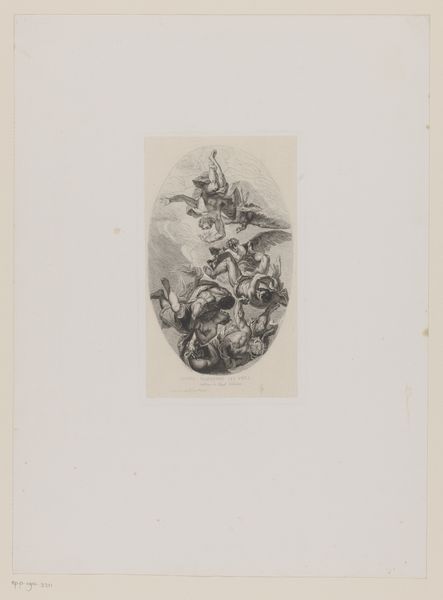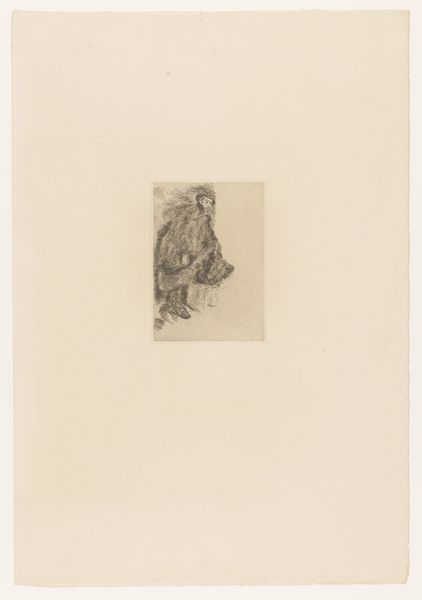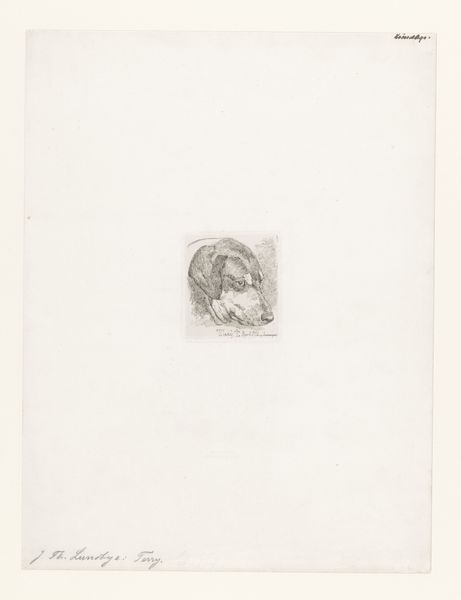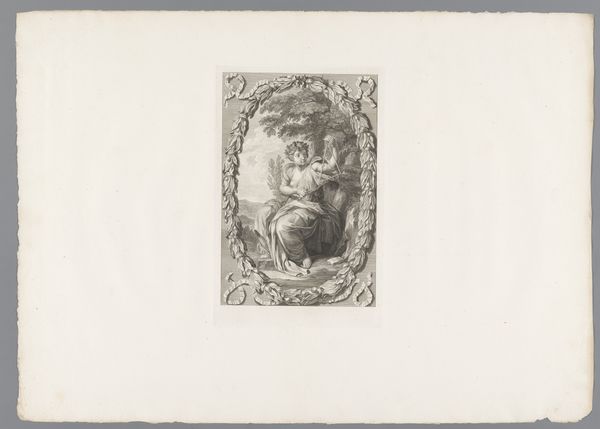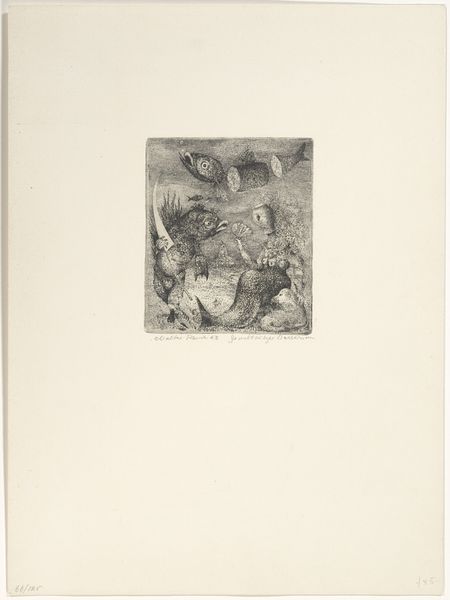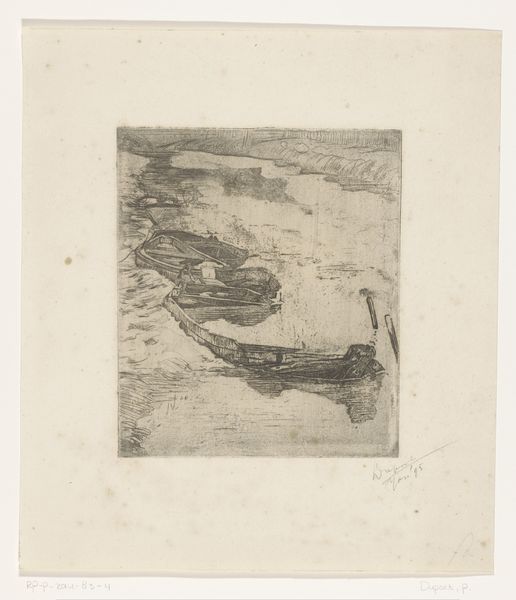
drawing, print, etching
#
portrait
#
drawing
# print
#
etching
#
academic-art
#
realism
Dimensions: height 150 mm, width 125 mm
Copyright: Rijks Museum: Open Domain
Editor: This is "Head of a Young Woman" etched by Otto Rasch in 1888. It's a small, delicate print, and I'm struck by the subtle details in the woman's bonnet and the soft lines defining her face. What do you see in this piece, focusing on its formal qualities? Curator: Well, if we look closely, the power of this etching resides precisely in its effective use of line and tonality to create depth. Notice how Rasch employs varied densities of hatching and cross-hatching to model the form of the woman’s face and head covering. The economy of line is also remarkable; each mark seems carefully considered to convey the play of light and shadow. How does the limited tonal range influence your perception of the work? Editor: It feels very intimate, almost like a fleeting glimpse. The soft grayscale makes it seem dreamlike rather than a stark depiction. Do you think the print medium contributes to that? Curator: Absolutely. Etching lends itself to nuanced effects, and here, Rasch masterfully controls the biting process to achieve a velvety texture, which softens the overall image. The composition, too, is notable: the profile view allows us to appreciate the contours of her face and the intricate patterns of the bonnet. The way the figure is cropped adds to its intimate and fragmentary feel. Editor: That's a great point; the cropping makes it feel both complete in itself, but part of something bigger we cannot see. I'll be sure to look more at the medium of art itself and how that forms my overall reaction! Curator: Exactly! It is essential to consider how the artist uses form and material to evoke a particular sensation. Looking closer enriches our aesthetic experience and deepens our appreciation for art.
Comments
No comments
Be the first to comment and join the conversation on the ultimate creative platform.
